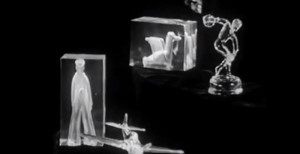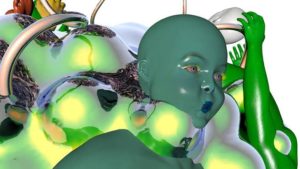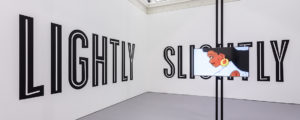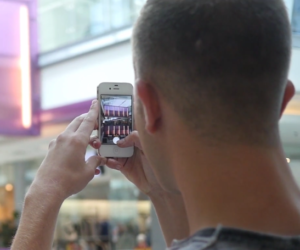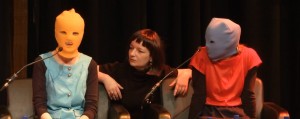There’s something decidedly austere about the Chisenhale Gallery’s main exhibition space. Part of an old print works, its bare concrete floor and strip lighting radiate what could reasonably be described as ‘Industrial asceticism’, giving the impression of a space in monkish subservience to the work displayed within. For a single night, though, the gallery’s dignified solemnity has been trumped; the cup of a large blue inflatable tent occupies the centre of the floor, as gloriously incongruous as an episode of The Sky at Night guest-hosted by the Teletubbies.
The simile is not as glib as it might appear; inside the tent, artists Julia Tcharfas and Tim Ivison have set up what they refer to as an “imaginary planetarium”, using the dome of the structure to project the images that constitute Systems Thinking from the Inside, a travelling lecture-cum-multimedia installation that seeks to explore the relationship between art, technological development and the curatorial process.
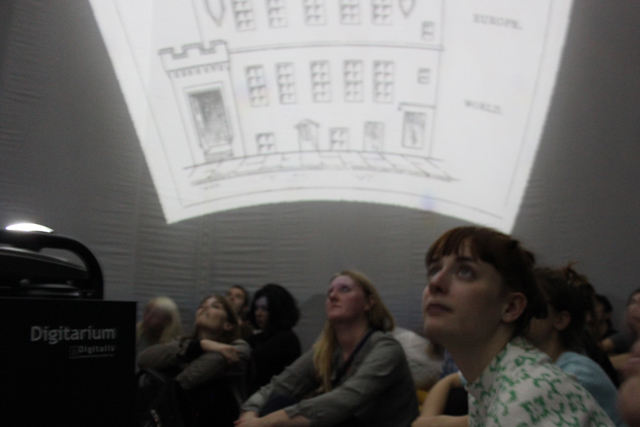
Taking as their frame of reference everything from the Great Exhibition of 1851 to the oddball tycoon Dennis Tito’s $20 million holiday to the international space station, Tcharfas and Ivison (the former a curatorial assistant at the Science Museum, the latter completing a Phd) propose an intellectual continuity that runs tangentially from the writing of visionary 19th Century cosmist philosopher Nikolai Fedorov to applied virtual reality. There are countless, fascinating digressions, but the pair make a persuasive argument that the technology of space travel has been directly influenced by philosophy, art and literature.
They describe, for example, how Fedorov’s science-fiction writing directly influenced the studies of Konstantin Tsiolkovsky, an early rocket scientist and hero of Wernher von Braun, who foresaw the apparatus of space travel with uncanny accuracy. As they speak, Tsiolkovsky’s delicate, Saint-Exupéry-esque drawings of humans floating in zero-gravity environments envelop the sides of the dome, revolving around the audience with the fluidity of the spacewalking they depict.

There are flaws: the operation of the projections to coincide with the lecture’s themes could be a lot tighter, neither Ivison nor Tcharfas are natural public speakers and the delivery lacks the authority needed for a truly immersive experience. Similarly, the language can veer into vagueness and generalistaion; a section on closed-off ecosystems, such as the leviathan Biosphere 2 complex in Arizona, veers off into the academically gauche proposition that a suburb is “an inversion of an ecosphere”. It is, as the artists make clear, a work in progress- and once fully realised there’s every chance it could be truly spectacular.
The academic meme that fantastical art and technological development are inextricably interlinked- with the former providing the inspiration and aesthetic for the latter- is nothing new, not even to the East London gallery archipelago (The Real Truth, Suzanne Treister’s wonderful 2012 show at Raven Row is a case in point). It is, however, a theme that a pair as imaginative as Ivison and Tcharfas can successfully stretch further.

